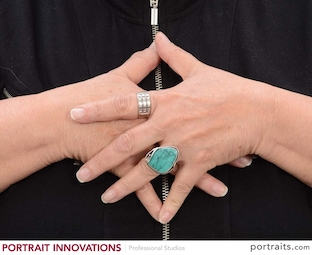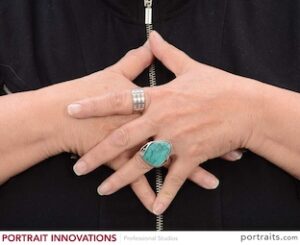Anchors

 We all know what an anchor is. We throw it over the side of the boat, the anchor sinks, and the boat becomes stationary. It is still. Parked. It stops moving except for bouncing a bit on the current or the waves.
We all know what an anchor is. We throw it over the side of the boat, the anchor sinks, and the boat becomes stationary. It is still. Parked. It stops moving except for bouncing a bit on the current or the waves.
Anchors do the same job for us. Wherever we throw in our anchor, we stay. For example, if you were in an auto accident while making a turn at a stop light you might get stuck and begin to fear stoplights and intersections with stoplights. The stoplight and intersection become a negative anchor for you. On the positive side, if you enjoyed your 10th birthday surprise party because your parents had butterflies released into the back yard when you arrived, you may relive your birthday every time you see a butterfly. It anchored you in that magical moment. Butterflies now stimulate that same 10-year-old happy excitement.
Let me give you examples of some anchors in my life. I love dogs. I had a big fluffy dog when I was a tiny child. I ran and played with that dog for hours and hours. I laughed and screamed with joy. He was my best friend and cuddle buddy. I am now a grandmother and dogs still bring those same emotions alive. I’ve spent very few years of my adult life without a fury friend to hug and play with.
I’ll confess a negative anchor. I have no idea what caused a fear response to rubbing alcohol or how it became a negative anchor, but it was for years. The response began during my early teen years. Any time I’d smell alcohol, even the tiniest whiff, my stomach would flip, I’d feel weak and light headed to the point I’d have to run away from the smell to stay on my feet. Over time this response calmed, and I began to feel safe around the smell. It resolved just like it arrived. Unconsciously. I was fortunate.
Building Positive Anchors:
How do we build and use positive anchors to improve our lives?
By the examples I’ve given, you might have noticed that anchors are very tied to your sensory system: Sight, smell, sound, touch, taste, or a combination of two or more of your senses.
Let’s begin with a little awareness adventure. What aspects of life feel really positive for you? What are your most positive memories? Where are you the most relaxed? What environmental location creates the most peace and joy? (beach, mountains, rolling hills and valleys, orchards and flower gardens, lakes for fishing and boating, mountain streams and waterfalls, the city sounds and sidewalks, a suburban village)
Make your list using the questions above as a guide. Then read the rest of the article and decide what fits into your list the best. You are now ready to begin building new positive anchors. The more positive anchors you have the happier you’ll be.
1. Breath
Conscious breathing can easily become an anchor because it creates almost instant relaxation. This is especially true if you breathe in and out through your nose. The mucus membranes in your nose are part of your autonomic nervous system which is in control of all the automatic functions in your body. Sit quietly and silently and begin to breathe in and out noticing the flow of your breath and the sensations of breathing. Feel the air flow in and out of your body. Notice your body and its response as you breathe slowly and consciously in and out.
2. Mudras
Mudras give your body sensory signals to relax, become calm, feel focused, improve body function, end fear etc. The hand mudra photo accompanying this article is instantly calming, comforting, and peaceful. It can be used on its own or combined with conscious breathing or word mudras. When used with word mudras, the frequency of the positive word (ex. peace) combines with the calming of the body and helps you form a new anchor.
A word mudra can be a chant like OM, or a phrase that combines each word with a step as you walk. For example, I am happy or a similar phrase can become a mudra. I am happy represents three steps. Step / I – Step / am – Step / happy. After making a habit of using this mudra while walking, walking becomes a happy experience and you feel increasingly more content in your daily life. The word happy will becomes and instant emotional boost.
3. Create rituals that become positive social, emotional, spiritual anchors
Prayer is a wonderful anchoring ritual. Prayer can be formal as it is during a worship service with heads bowed as you rest on bended knee. It can be a bed time ritual that brings great peace, especially if you pray at the same place each night.
A ritual activity can become prayer. For example, I’ve created a new morning ritual during which I use a seven tone chime to play the musical scale. Some of you know that our body responds to the musical frequencies of each note of the scale. The frequency of each sound becomes medicine for the body. I step outside or open the door and strike each note individually for the world around me. Inside the house I strike each note again and blend my voice to the sound. I find this very balancing and very peaceful. It seems to connect me more significantly with nature, with my inner being, and with Creation itself.
Walking in nature, sitting or standing beside a gurgling stream, standing and listing to the birds sing, watching the sun rise or set, bike riding in the park, floating in a canoe, mowing the yard, or painting a room can become a soothing ritual if you love what you are doing. I know people who love to clean their home, and doing so is a calming ritual.
Know yourself. Know what brings you into balance. Know what soothes your soul, and then do that. And, do it often to create a happy life.


Leave a Reply